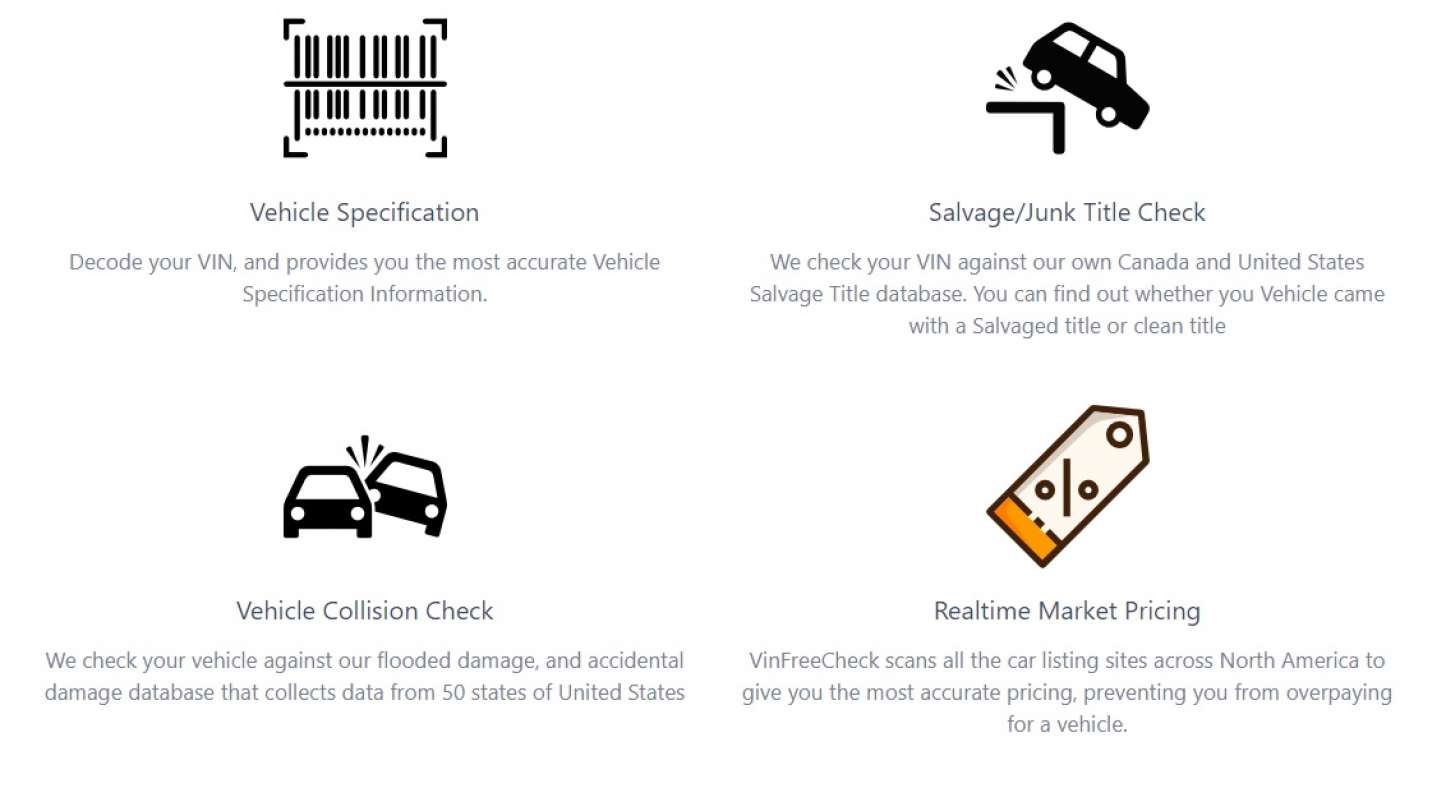Why a VIN check saves you money and trouble

Purchasing a used car is a gamble if a buyer doesn’t have enough information. It is quite easy to buy a used car for a good price and enjoy it trouble-free for many years, or buy one for a good price and have trouble within a few weeks, only to be quoted thousands of dollars for repair. It’s also easy to be overcharged. Instead of taking a gamble, consumers can check each car’s history before making a buying decision.
There are paid services that provide comprehensive reports on each car. For people who have a tight budget, there is vinfreecheck.com, an online service that provides a VIN report for free. VinFreeCheck.com has a comprehensive record of cars being sold from the year 2000 onwards. It decodes the VIN specification, performs a free VIN check on the vehicle and provides a basic VIN report that includes salvage title check, flood check and accident check for free. The inquirer simply needs types in the vehicle’s VIN to fetch a report.
What is a VIN Number?
VIN stands for Vehicle Identification Number. It is the unique identifying code for each car, motorcycle, moped and scooter. It is sort of a fingerprint, that is made up of 17 characters that stand for the car’s manufacturer, specifications and unique features. The automotive industry uses the VIN for warranty claims, registrations, recalls, insurance, thefts and towed vehicles.
The 17 characters (numbers and letters) in the VIN are not random. They mean something. Here is a breakdown of the characters.
1st character: indicates where the vehicle was built.
2nd and 3rd characters: identity of manufacturer.
2nd, 3rd and 8th characters: indicate flexible fuel vehicle.
4th to 8th character: indicate the brand, engine type and size.
9th character: is a security code that indicates that the VIN was authorized by the manufacturer.
10th character: indicates the model year of the vehicle.
11th character: identifies the plant that assembled the vehicle.
12th to 17th character: this is the serial number of the vehicle.
For older vehicles that don’t have a proper vehicle identification number, the site will provide a free license plate lookup for any vehicle registered in the United States. The information is organized by state so the searcher has to go to the correct state before performing the search. Vinfreecheck.com and a few other niche providers can get US consumers free VIN reports
What is contained in the free vehicle history report?
The free vehicle history report contains the following information:
Vehicle specification: The site can decode the given VIN and provide the searcher with very accurate information about the vehicle’s specifications.
Salvage/junk title check: The website searches the US and Canadian databases for the particular VIN to find out if the vehicle came with a clean title or a salvaged title.
Vehicle collision check: The website has a database that contains all the vehicle damage information from 50 states. If the vehicle was involved in an accident, the information exists.
Market price check: The website scans all the car sales websites in North America to find out what the market is generally asking for a vehicle similar to the one being checked. They come up with a very accurate price that prevents the consumer from overpaying for the vehicle.
Odometer record: Odometer records are available from each state’s Division of Motor Vehicles (DMV) and auction sources. VINfreecheck.com fetches that information and includes it in the report so that the consumer can examine the numbers and compare with what is being given currently.
Detailed vehicle history: The website fetches the vehicle’s history from the state’s DMV, and multiple police and auction sources. The information is presented in chronological order.
Where to find the VIN
Cars: The VIN is easy to find on the dashboard by the driver’s side and on the driver’s side door. It is also imprinted in the car’s bonnet where the engine is but this one may be difficult to find.
Motorcycles: The VIN is imprinted on the motorcycle frame on all “two wheelers” and “three wheelers.”
All vehicles: The VIN is available on the vehicle’s insurance policy.
No more buying used cars blindly
Buying a vehicle is a huge investment and every buyer hopes to get a good use of the vehicle before it breaks down. Now all consumers can look up the vehicles that they are interested in before paying an unfair price or before buying a vehicle that has hidden problems.